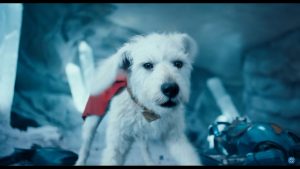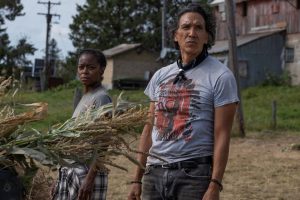Reviews include Superman, Apocalypse in the Tropics, and To a Land Unknown.
The Day I Discovered Stanley Kubrick
October 23, 2014
Many critics are asked what their favourite movie is. For Peter Howell, the answer every time is 2001: A Space Odyssey
On January 22, 1969, NASA launched the OSO 5 satellite from the Kennedy Space Centre, part of its Orbiting Solar Observation progam to study the effect of the Sun’s rays upon Earth. For me, the day was illuminating in an entirely different fashion, although it also involved the contemplation of cosmic forces. It was the day I discovered Stanley Kubrick, soon to be feted by a TIFF Bell Lightbox exhibition, by way of the movie that became an immediate favourite and has forever remained that way: 2001: A Space Odyssey.
It was also the day that opened my mind to the power of film.
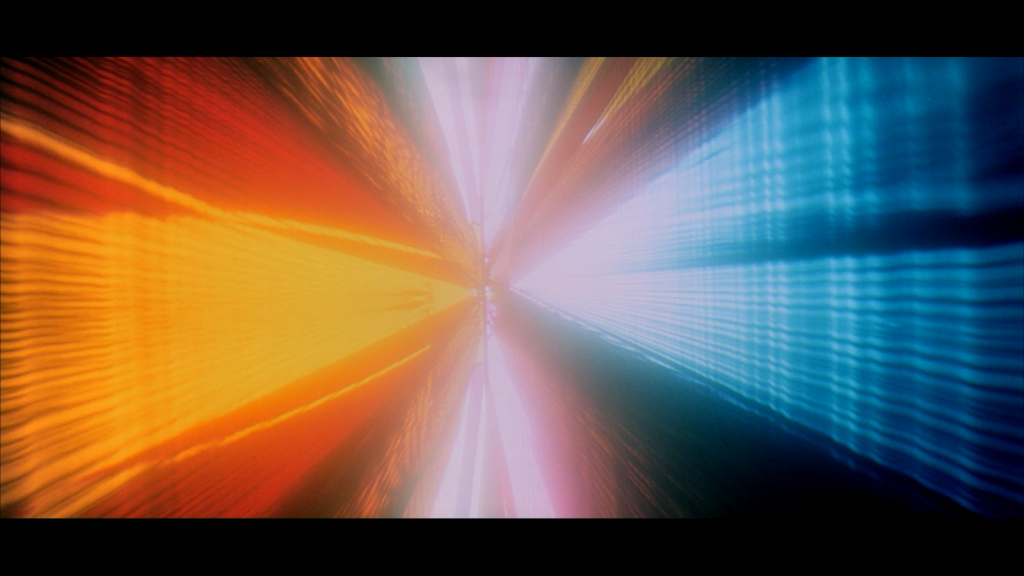
Jan. 22, 1969 was also the occasion of my 13th birthday. To mark the start of my teen years, my parents were allowing me to go out on a school night to catch the film I’d been bugging them to see for months. 2001 was playing at just one theatre in Toronto: the Glendale on Avenue Rd., which I believe was the only one in town featuring the classic Cinerama curved screen, the largest format available in those pre-IMAX days.
I thought of 2001 as a moon-landing movie, not a Kubrick one. If I had any awareness of Kubrick at all in those days, it would have been only in passing. I’d read about 2001 in an April 1968 cover story in LIFE magazine, which my family subscribed to, and which I devoured every week after it showed up in our mailbox. In those days I loved movies, but space travel and the moon were obsessions, as they were for many kids of my age and indeed the whole world. We were in “The Age Of Aquarius,” the hit song of the day, but more importantly, we were also in the Age of Apollo.
Apollo 8 had made mankind’s first orbit of the moon just a few weeks earlier, right before Christmas. In the months to come, we were anticipating the Apollo 9 and 10 staging flights to road test the lunar landing module and command module, and come July, the big one: Apollo 11, the first manned moon landing. “Earth Moonstruck,” to quote a newspaper headline I recall from the old Toronto Telegram, which I used to deliver.
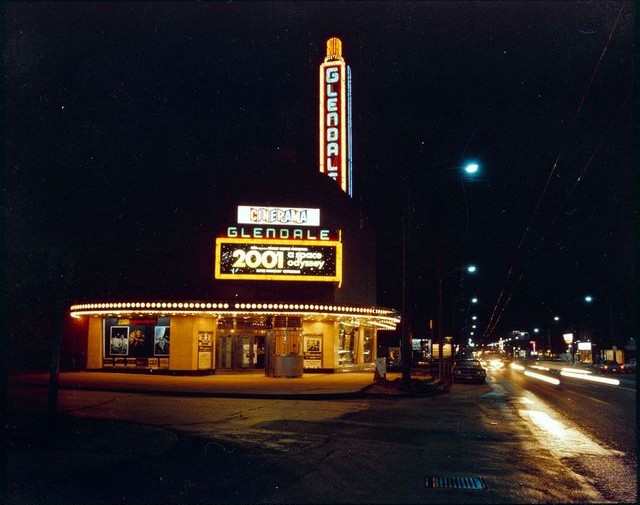
I’d heard that 2001 featured a long and very realistic segment where an Apollo-style vehicle lands on the moon (it does), and that was enough to draw me to the Glendale, in the company of my middle brother Mike and my slightly older friend, also named Mike. My salesman dad John met us at the theatre just before the 7 p.m. showtime, since he was working late and didn’t have time to travel to our Scarborough home to pick us up. Jan. 22, 1969, was also the occasion of my first taxi ride without parental accompaniment, my mother giving me a $10 bill to pay the fare, a large sum in those days.
Settling into our seats, we were all suitably awed by the Glendale’s huge curved screen, which is still the most impressive one I’ve ever seen. We were moved to respectful silence by the sound of Ligeti’s “Atmospheres,” the overture music, and then dazzled when the curtains opened to the audio hammer of “Thus Spake Zarathustra” and the visual thrill of the Earth, Moon and Sun aligned in spectacular fashion.
This was immediately followed by the Dawn of Man sequence, where man-apes discover the mysterious black monolith that becomes the catalyst for much of the action to follow, although “action” would not be the word used by most critics to describe this daring act of cinema. Here was a movie of the Space Age that seemed to be looking back to the silent film era. Not a word is spoken in 2001 until the 24-minute mark, nearly the beginning of the second of four acts, when travelling space official Dr. Heywood Floyd (William Sylvester) arrived at an orbiting space station, enroute to the moon. He’s greeted by a flight attendant.
This part of the film, which includes the moon landing sequence and the first hint of a plot (Sylvester is investigating “odd things” at Clavius Base, a U.S. lunar outpost), was the part I’d come for, and I wasn’t disappointed. Especially when Floyd tells his fellow scientists that he “brings a personal message from Dr. Howell,” a name that obviously perked up my ears. I almost choked on my Twizzler.
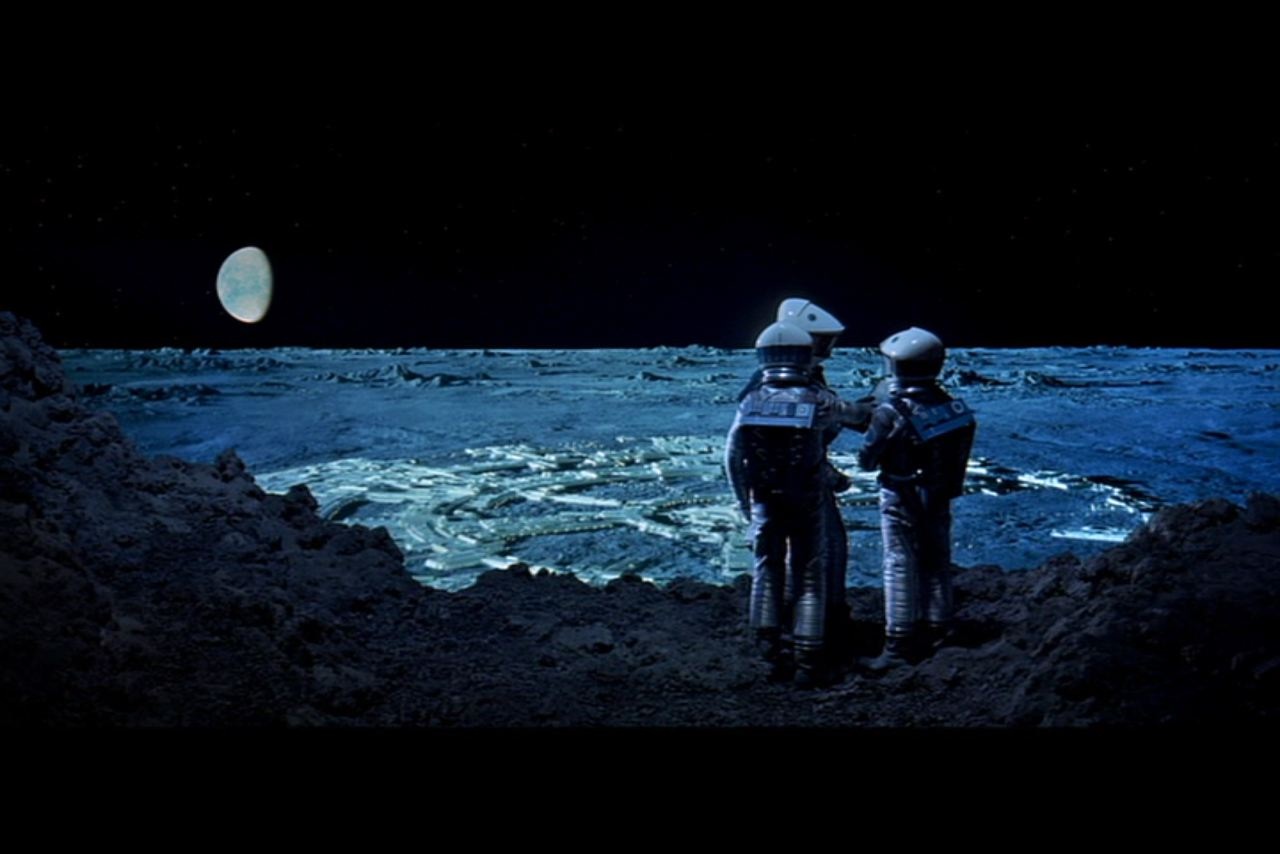
“DAD!” I whispered, nudging my father in the ribs. “Did you hear that? Dr. Howell!”
The final two acts of 2001 seemed to race by, as we met astronauts Dave Bowman (Keir Dullea), Frank Poole (Gary Lockwood) and their guiding super computer HAL 9000. They’re on a voyage to Jupiter that we guess has to do with those “odd things” spoken of earlier. We learn more details about the strange and wonderful monolith, but not in the gift-wrapped way most moviegoers expect, then as now.
In the ominous words of Heywood Floyd: “Its origin and purpose are still a total mystery,” although we’ve come to learn he’s not the most reliable of expositors. The monoliths were created as signalling devices by an alien race of superior intellect and technology, who have been waiting for humans to evolve to point where they can finally grasp the co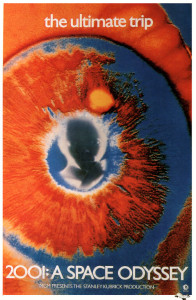 ncept of other life beyond Earth’s bounds. My brother and friend were impressed and my Dad was baffled but interested. Like many viewers of the day, including most critics, he found 2001 slow, uninvolving, and frustratingly opaque; I remember him noting a special confusion towards those “damned black slabs.” But my Dad was and is a good egg. He took me to see 2001 again on my 14th birthday exactly a year later, again at the Glendale.
ncept of other life beyond Earth’s bounds. My brother and friend were impressed and my Dad was baffled but interested. Like many viewers of the day, including most critics, he found 2001 slow, uninvolving, and frustratingly opaque; I remember him noting a special confusion towards those “damned black slabs.” But my Dad was and is a good egg. He took me to see 2001 again on my 14th birthday exactly a year later, again at the Glendale.
As for me, to say that I was blown away by my first encounter with 2001 and Stanley Kubrick all this barely describes the experience. I’ve now seen the film more than 50 times. It made me realize, after an early diet of Walt Disney movies, Westerns, and World War II pictures (my Dad loved those) that there was more to movie-going that the proverbial three-act story with a happy ending. I wanted to learn more about other types of cinema, and most importantly, I wanted to learn more about Stanley Kubrick and his films.
I wish I could recreate that first 2001 experience, and there may just be the chance to. Seattle has one of the world’s last operating Cinerama theatres (Toronto’s Glendale is now sadly a car dealership), and it regularly shows 2001: A Space Odyssey. Maybe I’ll be able to go there for my 63rd birthday on January 22, 2019, to mark the 50th anniversary of my first viewing. It would be quite the trip, hopefully also in the presence of family members, but then the poster for the film has always described accurately described 2001 as “the ultimate trip.”

